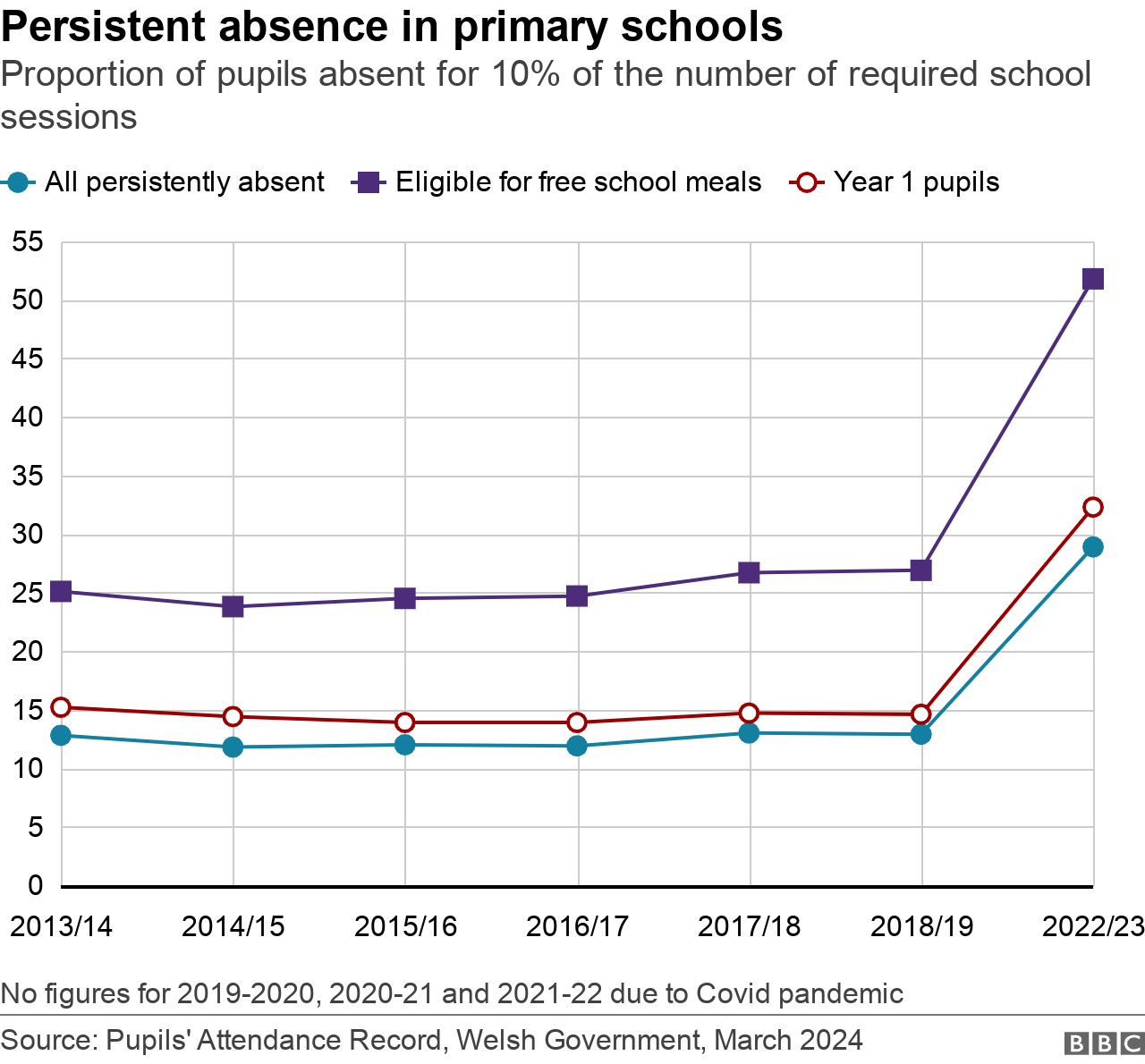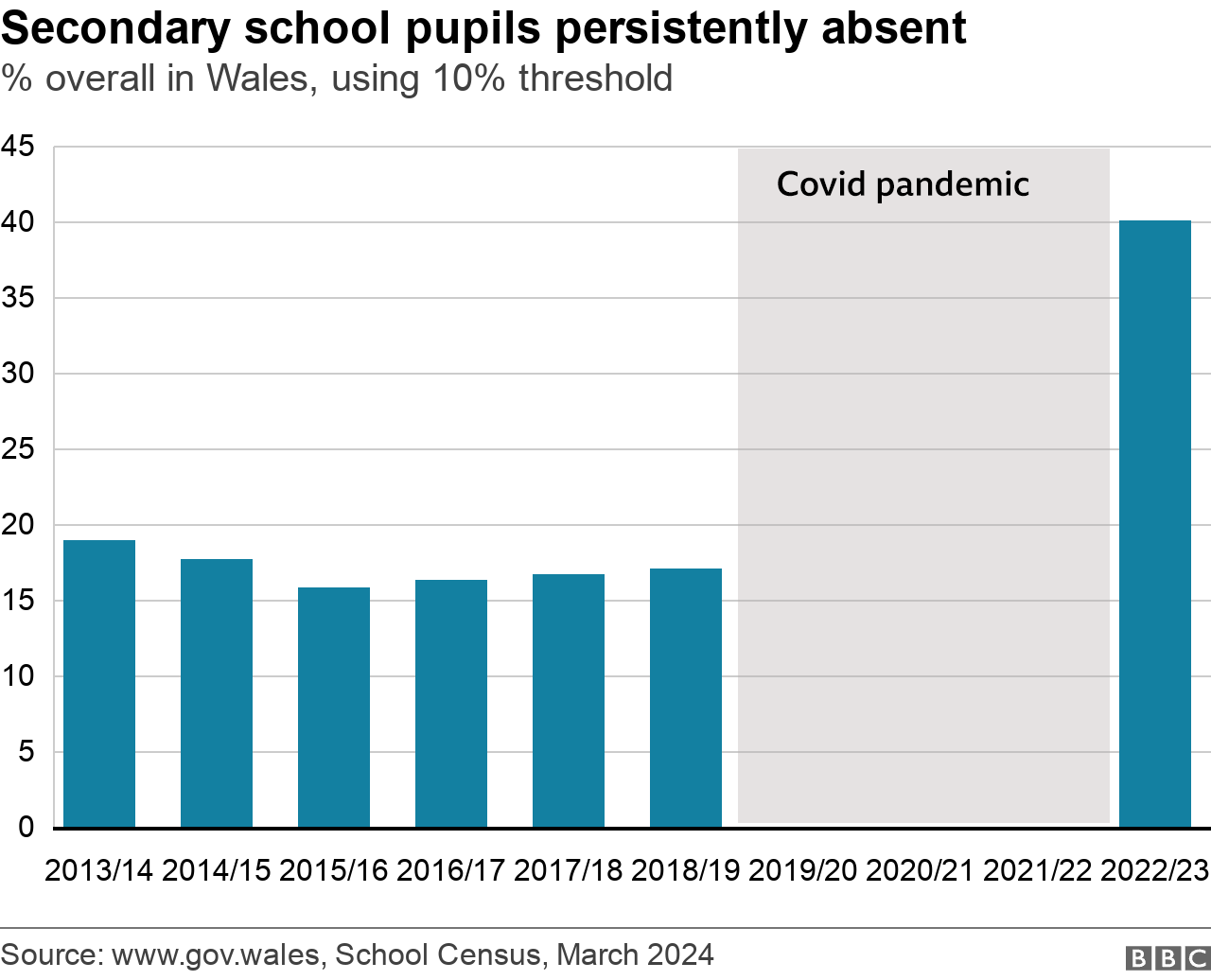Sharp rise in primary school absences since Covid

The highest absence is among the youngest pupils (picture posed by models)
- Published
The proportion of pupils in primary schools in Wales who are persistently absent has more than doubled since before Covid, new figures show.
Persistent absence is now defined as those who miss 10% of school sessions.
Under this new threshold – aimed at tackling absenteeism – 28.9% of primary pupils were persistently missing school in the year ending in July 2023.
This compares with just 12.9% in 2018-19 and an average of about 12% in the five years before that.

This is the first set of data to be published since before the pandemic for the primary sector., external
It follows figures earlier this month which showed that persistent absence had more than doubled for secondary age pupils too.
The position is worst for the youngest pupils, with a third of five-year-olds (32.4%) persistently absent in 2022-23, compared to only 14.6% in 2018-19.
There is also a big gap involving those from poorer backgrounds, with more than half of those eligible for free school meals (51.8%) classed as persistently absent, compared to 22.4% primary pupils who are not eligible.

Earlier this month, figures for secondary schools , externalshowed 40% of pupils had been persistently absent in 2022-23, compared to 17% in 2018-19.
That figure rises to 49% of Year 11 pupils, while persistent absence in secondary age pupils from poorer backgrounds is 55.8%.
In the first 20 weeks of this academic year, there has been a slight improvement in absenteeism, with 17.7% of pupils recorded as persistently absent, compared to 20.5% at the same point in 2022-23.
Analysis by Bethan Lewis, BBC Wales education correspondent
Concerns about absenteeism usually focus on older children, but these figures show just how big an impact the pandemic seems to have had on the attendance of the youngest pupils too.
In a class of 30 in a primary school, on average, at least eight pupils were persistently absent in the 2022-23 academic year.
Rates are much higher for children who are eligible for free school meals in line with the picture in secondary schools.
The reasons for absence are complex and could be different for younger children, compared to older pupils.
But there are probably some common factors, including a change in attitude to school attendance since the pandemic.
The definition of persistent absence – missing 10% of school sessions or the equivalent of 19 days for a primary school pupil – changed so that extra help kicked in sooner.
The Welsh government says its weekly attendance data suggests things are improving, but this data shows just how much ground there is to make up.